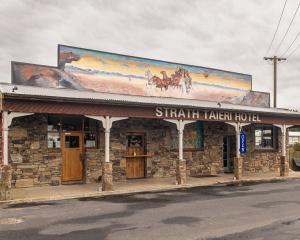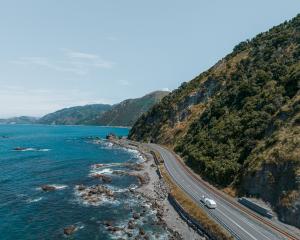
There's a large, framed route map of the London Underground on my office wall which betrays me as one of those weird, possibly slightly obsessive people who finds the Tube endlessly fascinating.
Back in the day, I travelled the system when it still felt like a hangover from the 1940s. We bumped along on the old Bakerloo Line trains when they had dim incandescent lighting and kooky wool moquette seats. (Proper Tube superfans will know the rolling stock I’m talking about — I’m not that obsessive.)
We rode to the surface on the creaking timber escalators at King’s Cross, which, sadly, would later catch fire [November 18, 1987], causing a terrible tragedy. We minded the gap at Embankment and once even traded a few vegetables for a fare with a bewildered ticket taker at Bethnal Green.

To meet that growing demand and crack open the deep mysteries of the Tube, Transport For London offer its novel "Hidden London" tours.
Now, instead of just the odd maintenance worker getting into these places, you, too, can explore the abandoned Down Street station in Mayfair where Winston Churchill secretly sheltered during the Blitz; or poke through the disused Aldwych station, once the last stop on the Piccadilly Line, now more frequently seen as a film and TV location; or wander the old tunnels at Euston, where the walls are lined with vintage advertising posters, fragments that went unseen for decades.

Yes, that’s up there in price, but when someone is unchaining a rusty gate and beckoning you into the dusty depths of Piccadilly Circus, it all suddenly seems worth it.
As our guide leads us down into tunnels and lift shafts closed to the public since the 1920s, we pass through unused access tunnels between the platforms and the lifts, lined with distinctive green tiles designed by the original architect, Leslie Green. Curiously, the patterns and colours were originally intended to help passengers who couldn’t read identify their destination and navigate their way through the system.
We stand in giant ventilation shafts, then edge along narrow tunnels and hear tales from World War 2. Back then, Londoners instinctively made their way underground as Hitler’s Blitz bombs rained down on the capital. The government initially pushed back against the sheltering hordes, before rapidly realising resistance was futile. Soon the station was a well-organised mass air-raid shelter, with about 7000 people cramming in every night.

Down in the bowels, you start to get an idea of how mind-bendingly complicated this subterranean world is, and what a marvel of engineering. Originally completed in 1906, Piccadilly was almost immediately overwhelmed by demand. In 1907, 1.5 million passengers used the station; by 1922 it had grown to 18 million.
As one of the few stations on the network to exist entirely underground, rebuilding the station was a massive undertaking. The famous statue of the Anteros (commonly confused as Eros, thanks to the addition of a cupid’s bow) was moved and a giant access well dug out (that is still there as an emergency staircase to the ticket hall from the Piccadilly Line).

After an hour wandering the depths, we emerge back into the travertine-lined walls of the main concourse and pause to take in a large wall display, a tribute to Frank Pick, the lauded former chief executive of London Transport.
Pick oversaw the golden age of the Tube, including much of the redesign of Piccadilly Circus and the commissioning of the famous typefaces, signature London Underground roundel and the innovative map design which are such familiar London icons today.

TFL’s Hidden London tours have been a roaring success too. Last year they were voted "Best Hidden Gem in the World" in the Tiqets awards, which spotlight the best of the lesser-known and niche attractions around the globe.
They have also evolved into a TV documentary series called Secrets of the London Underground (available here on TVNZ+). And for armchair travellers, they’ve even introduced "virtual" tours over Zoom.

By the way, I mentioned my framed Tube map earlier and here’s an insider’s tip on how to get one: Transport For London produce special large format maps for the visually impaired, which also happen to double as brilliant wall posters. Just ask at any Tube station office and they’ll give you one — for free.
Checklist: London
Details
For more details on the Hidden London tours, see ltmuseum.co.uk/hidden-london












